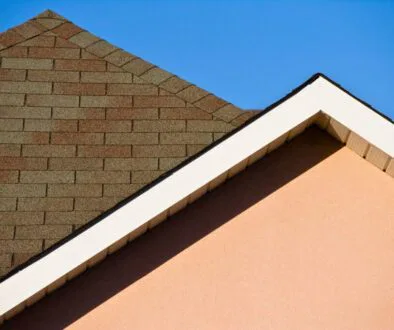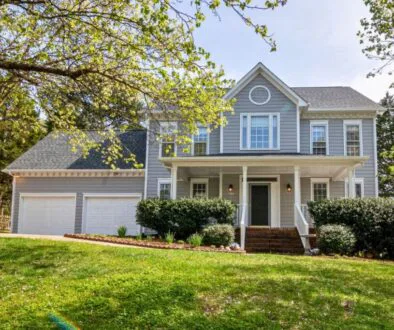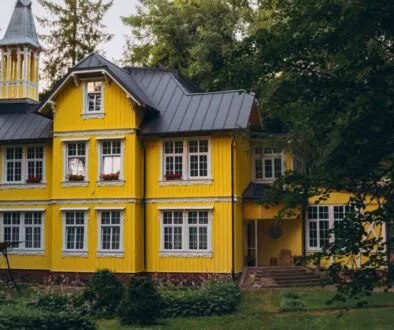Types Of Wood For Cabinets: Ultimate Guide to Wood Kitchen Cabinets
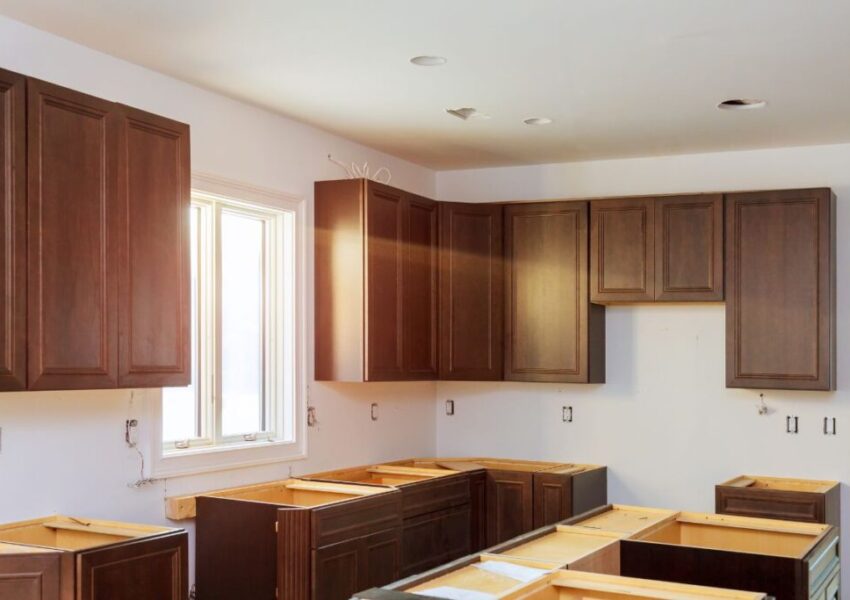
Published September 9, 2024
Selecting the right wood for your kitchen cabinets significantly affects the look, functionality, and lifespan of your kitchen. With numerous wood varieties available, understanding their distinct features can help you make a well-informed decision that matches your kitchen’s design, budget, and durability needs.
This comprehensive guide will introduce you to popular wood choices for kitchen cabinets and offer essential tips for choosing the ideal material.
Types of Wood for Kitchen Cabinets
Choosing the right type of wood for your kitchen cabinets is crucial, as it affects both the look and the longevity of the cabinetry. Here’s an overview of the primary materials used:
Solid Hardwood
This is the traditional choice, known for its strength and natural beauty. Solid hardwood cabinets are crafted from single pieces of wood, showcasing unique grains and textures.
Engineered Wood
This is a cost-effective alternative to solid wood, comprising several layers of wood bonded together. It offers a wood-like appearance while being more resistant to warping and moisture.
Veneer
A thin layer of wood applied over a composite base, veneers provide the aesthetics of real wood at a lower cost.
Laminate
Comprising a plastic layer over a composite base, laminate cabinets can mimic the look of wood and are easy to maintain.
Reclaimed Wood
Reclaimed wood is a compelling choice for kitchen cabinets, offering a blend of history, sustainability, and distinct charm. This material is sourced from old structures like barns, factories, or warehouses, bringing a unique character and story to your kitchen design.
Types of Wood Species for Cabinets
Oak
Oak is a traditional choice known for its durability and prominent grain patterns. Available in red and white types, oak is strong and affordable, making it a versatile option for various kitchen styles.
However, the distinct grain may not suit everyone’s design preferences, particularly for those desiring a more understated look.
- Characteristics: Oak features a bold grain pattern and high durability.
- Pros: Cost-effective, sturdy, and readily accessible.
- Cons: The noticeable grain might not align with all design tastes.
Maple
Maple stands out for its smooth texture and light color, allowing it to blend seamlessly with different kitchen styles. It absorbs stains well, offering design flexibility. Although durable and less costly than cherry and walnut, maple can darken over time, especially with sun exposure.
- Characteristics: Light color with a subtle grain pattern.
- Pros: Durable, adaptable, and more affordable than cherry and walnut.
- Cons: Tends to darken over time, particularly with significant sunlight exposure.
Cherry
Cherry wood is celebrated for its rich, reddish hue that deepens as it ages, adding a sophisticated feel to any kitchen. Its smooth grain and polished look make it ideal for traditional and warm designs.
However, cherry is more expensive than other options and may darken unevenly, affecting its uniformity.
- Characteristics: Smooth grain and rich coloration.
Pros: Provides a polished appearance, perfect for traditional and warm aesthetics.
Cons: Higher cost and potential for uneven darkening.
Hickory
Hickory is valued for its strength and distinct color variations, making it ideal for rustic or country-style kitchens. Its bold grain and color range from pale to dark provide unique character.
Despite its durability, hickory can be tough to work with due to its density, requiring more effort during installation.
- Characteristics: Strong with a bold grain and color range from pale to dark.
- Pros: Highly durable and visually distinctive.
- Cons: Challenging to work with due to its density.
Walnut
Walnut is admired for its deep, rich color and smooth, fine grain, offering an upscale look for high-end cabinetry. Its dark, sophisticated appearance suits sleek, modern designs.
However, walnut is costly and may show wear more readily than lighter woods, necessitating more maintenance to keep it looking pristine.
- Characteristics: Dark wood with a straight, fine grain.
- Pros: Offers a refined appearance, fitting for sleek, modern designs.
- Cons: Expensive and prone to showing wear more than lighter woods.
Poplar
Poplar is a popular choice for budget-friendly kitchen cabinets due to its affordability and versatility. It features a soft texture and a straight grain, often used as a base for painted finishes.
- Characteristics: Soft texture with a straight, fine grain.
- Pros: Cost-effective and ideal for painted or stained finishes, allowing for a variety of styles.
- Cons: Less durable than hardwoods, making it more prone to dents and scratches.
Birch
Birch offers a fine grain and a pale color, often used as a cost-effective alternative to maple. It is known for its strength and smooth texture, making it suitable for various kitchen designs.
- Characteristics: Fine grain with a light color.
- Pros: Strong and versatile, providing a good balance between cost and durability.
- Cons: Can be challenging to stain evenly, sometimes leading to inconsistencies in color.
Alder
Alder is appreciated for its warm hues and is relatively easy to work with due to its soft nature. It has a straight grain and can take stains well, making it a flexible option for many styles.
- Characteristics: Warm tone with a straight grain.
- Pros: Easy to work with and adaptable to different finishes, offering a warm aesthetic.
- Cons: Softer than other hardwoods, which may lead to more noticeable wear and tear over time.
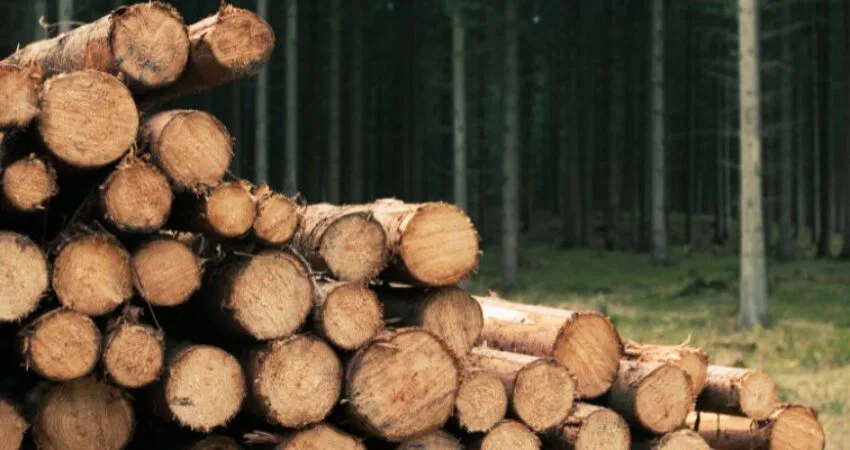
Considerations for Choosing Wood for Cabinets
When choosing wood for kitchen cabinets, several key factors should guide your decision:
Visual Appeal
Consider your kitchen’s overall theme. The wood’s color, grain, and texture should complement your kitchen style. Oak and hickory are ideal for traditional or rustic settings, while maple and walnut fit modern aesthetics.
Budget
Set your budget constraints. Some woods, like maple and oak, provide excellent value, while others, such as cherry and walnut, are priced higher due to their refined appearance and distinct characteristics.
Durability and Care
Evaluate the amount of wear and tear your kitchen might experience. Hardwoods like hickory and oak are excellent for high-traffic areas due to their resilience. Also, consider the care required; some woods may need more upkeep to maintain their look.
Color and Aging
Be aware of how the wood’s color may transform over time. Woods like cherry and maple can darken with age and exposure to sunlight, influencing your kitchen’s long-term appearance.
Environmental Impact
Consider the sustainability of the wood. Look for options that are responsibly sourced or certified by environmental organizations to make an eco-friendly choice.
Final Thoughts
Selecting the right wood for your kitchen cabinets is essential in crafting a space that reflects your personal style while meeting functional needs. Whether you prefer the timeless charm of cherry or the rustic appeal of hickory, there’s a wood type that can perfectly fit your vision.
Remember to weigh each option’s pros and cons and consider your specific requirements before making a decision. With the right choice, your kitchen cabinets can become a lasting investment in your home’s beauty and practicality. Understanding the various types of wood for cabinets will help your kitchen look impressive and endure through time.
Hire The Timber Experts For Your Next Project
Vintage & Specialty Wood should be your source of the highest quality timbers from around the world. When it comes to fabricating and installing reclaimed wood or specialty wood products in your home, we don’t cut corners. We offer many reclaimed wood and specialty wood products such as Douglas Fir, white oak, and much more. We also offer timber framing and wood flooring services as well. Contact our team today to speak to a timber expert about what Vintage & Specialty Wood can do for you.

This Blog Is Fact Checked
This content has undergone meticulous fact-checking by our team of internal experts. Gain a deeper understanding of the high editorial standards we uphold on our website here.

About The Author
Experience, exploration, and knowledge are the hallmarks of writer Rei Bayucca. Her dedication to crafting articles that both inspire and educate will leave you thinking long after you’ve finished reading.

